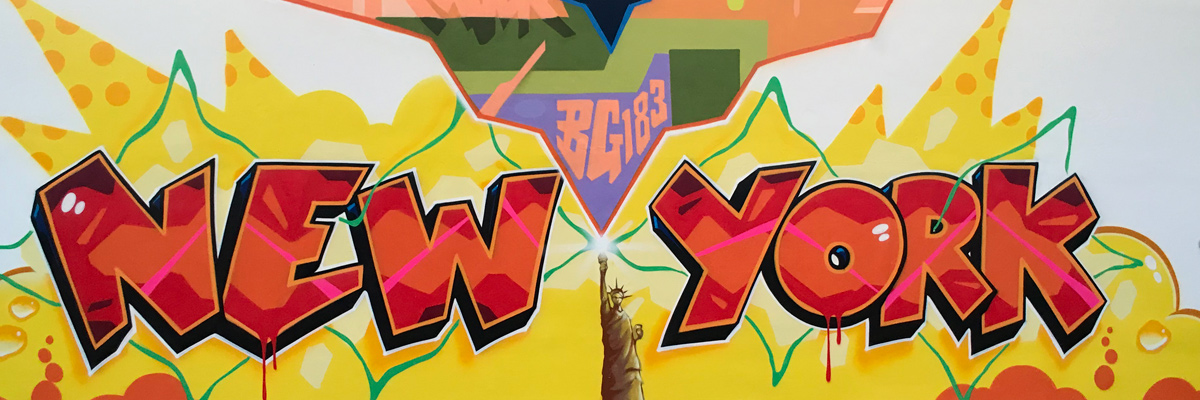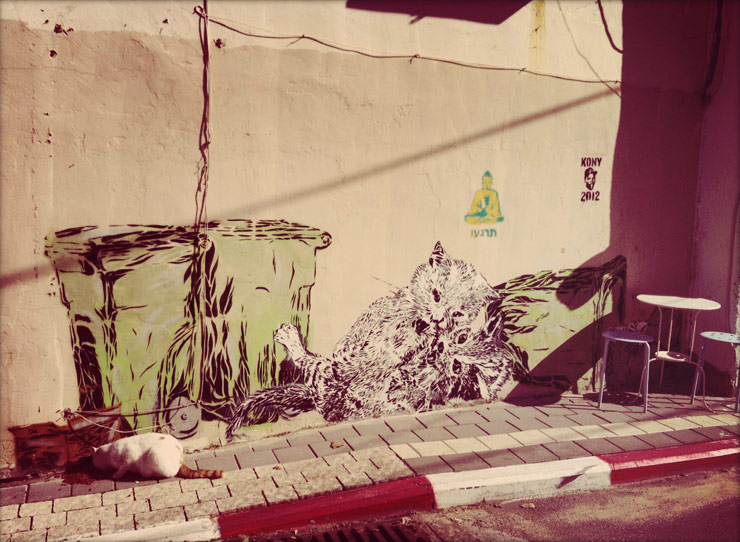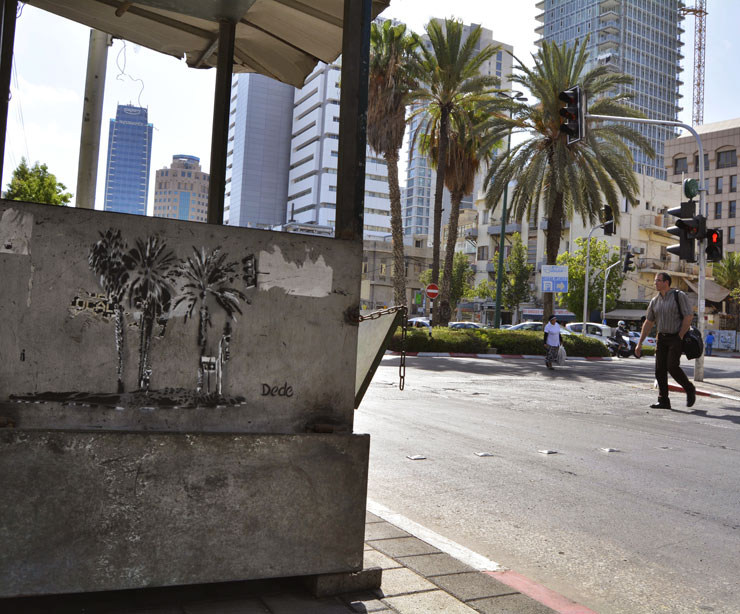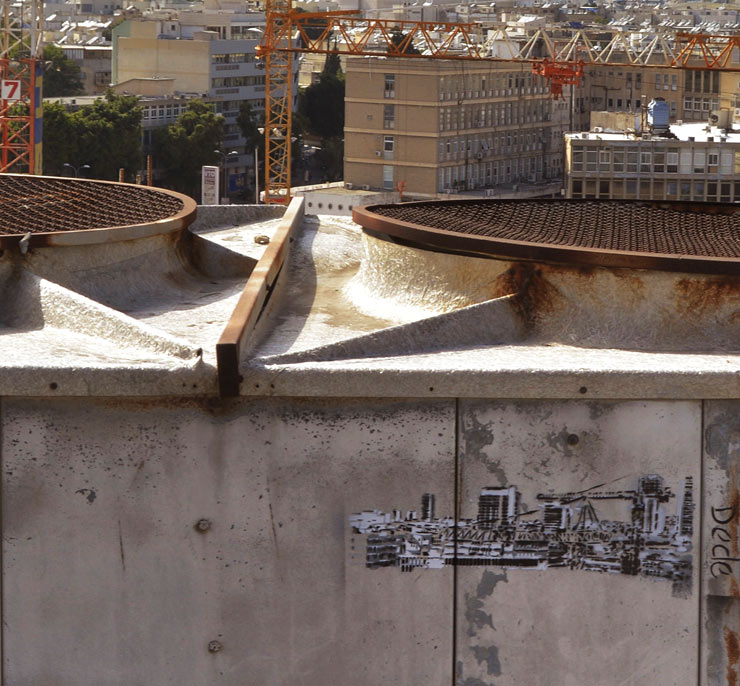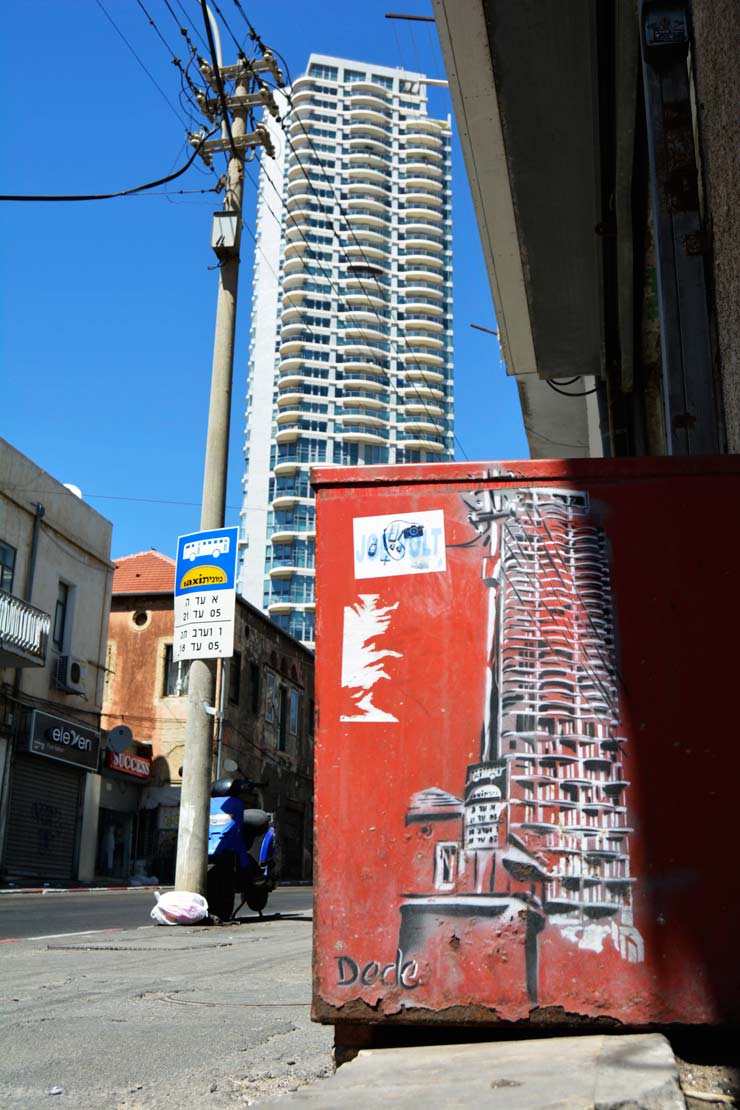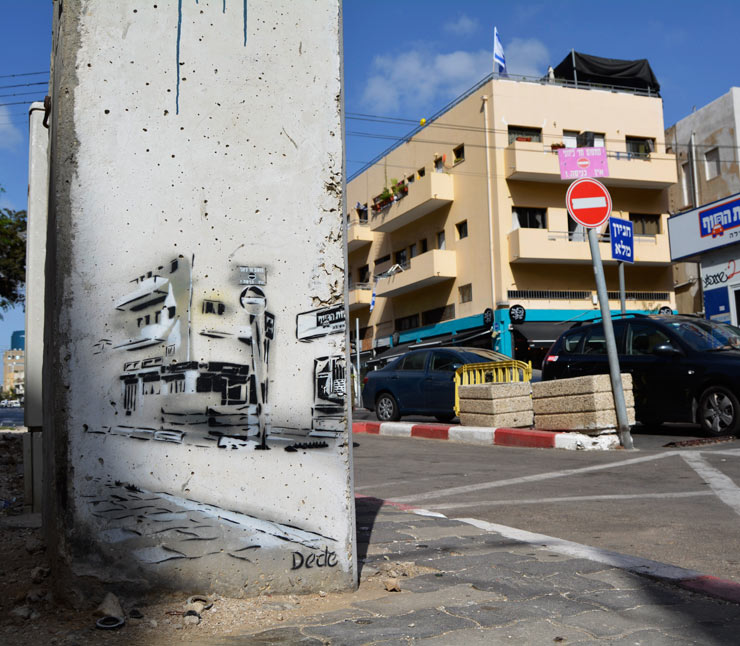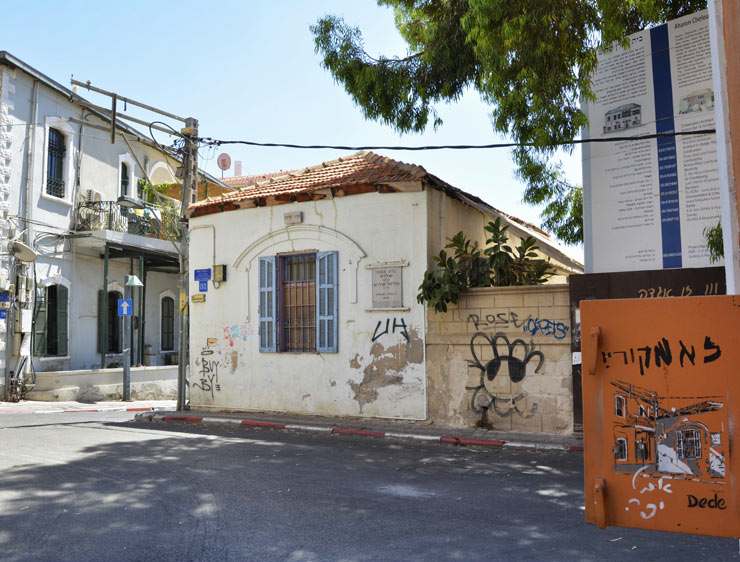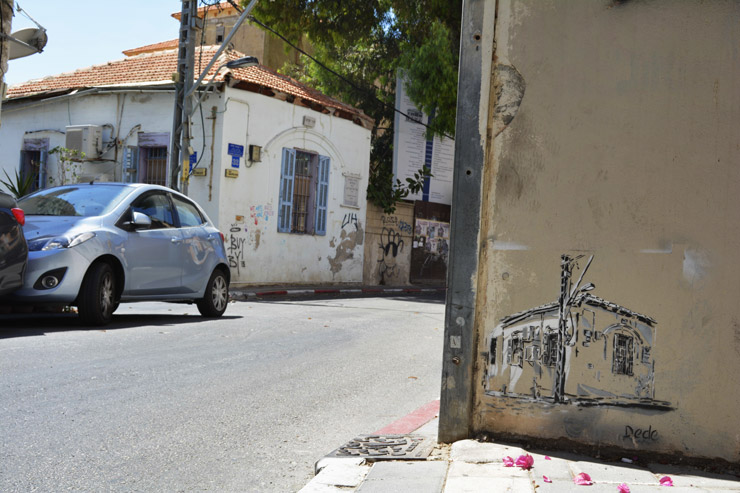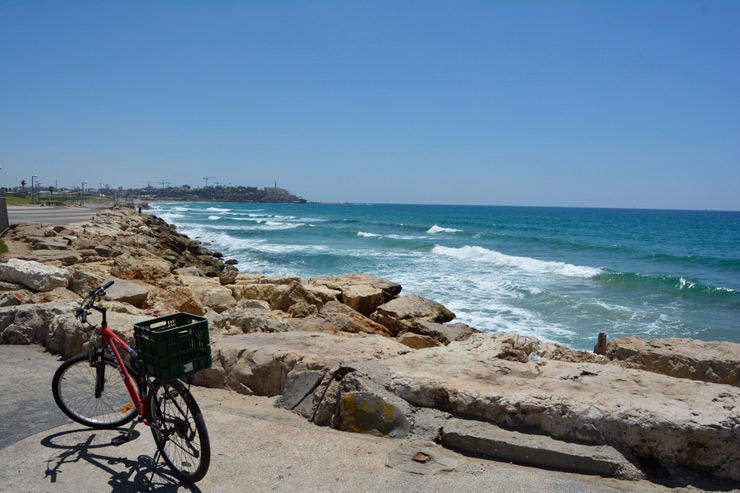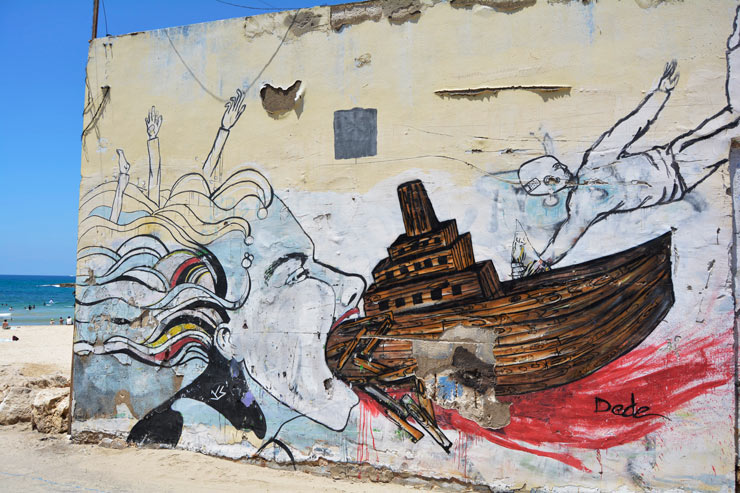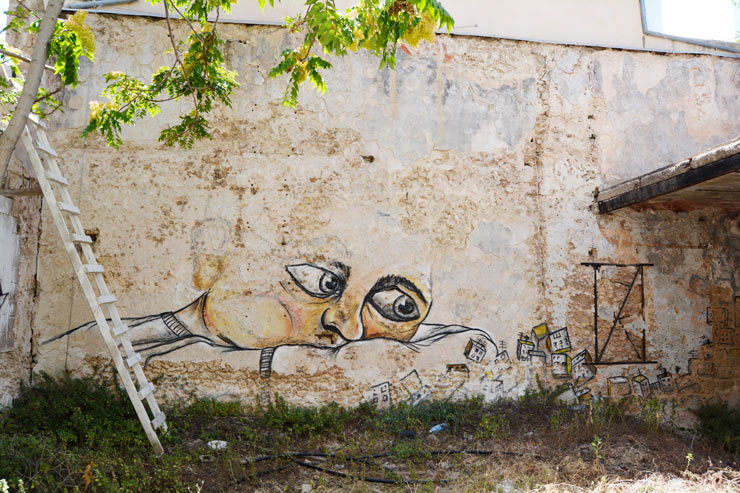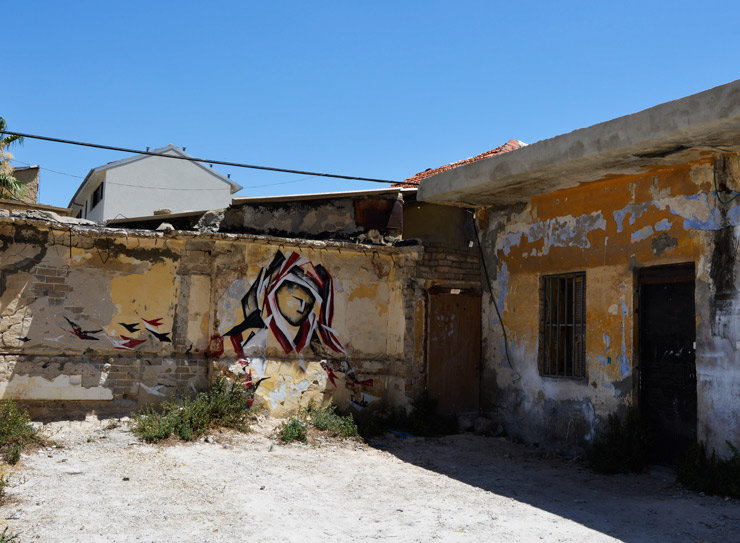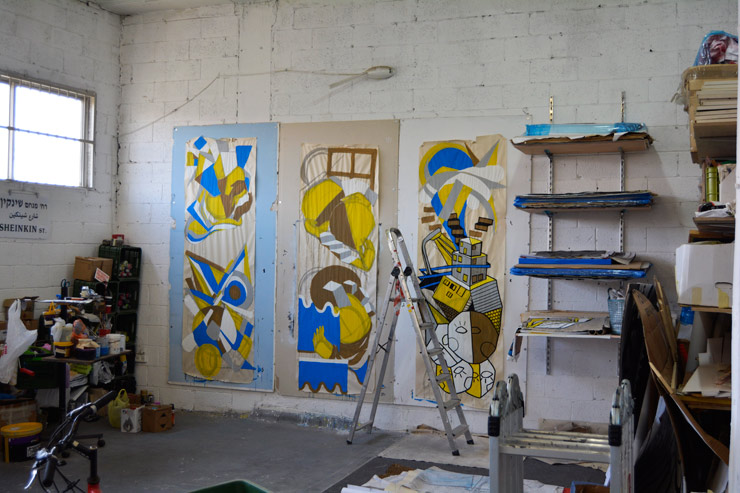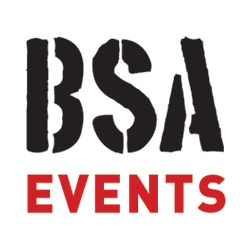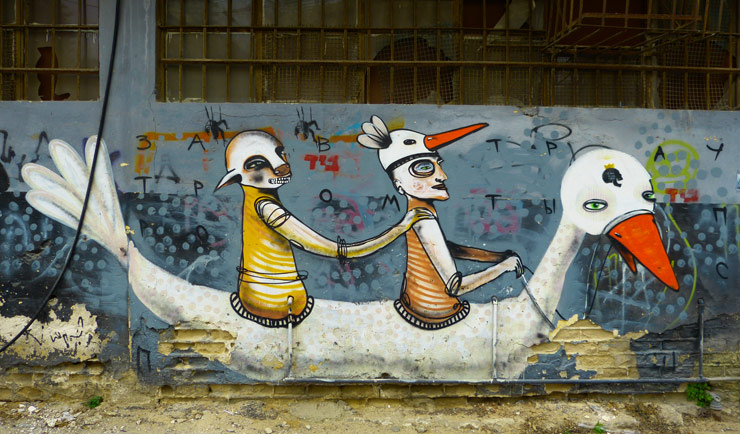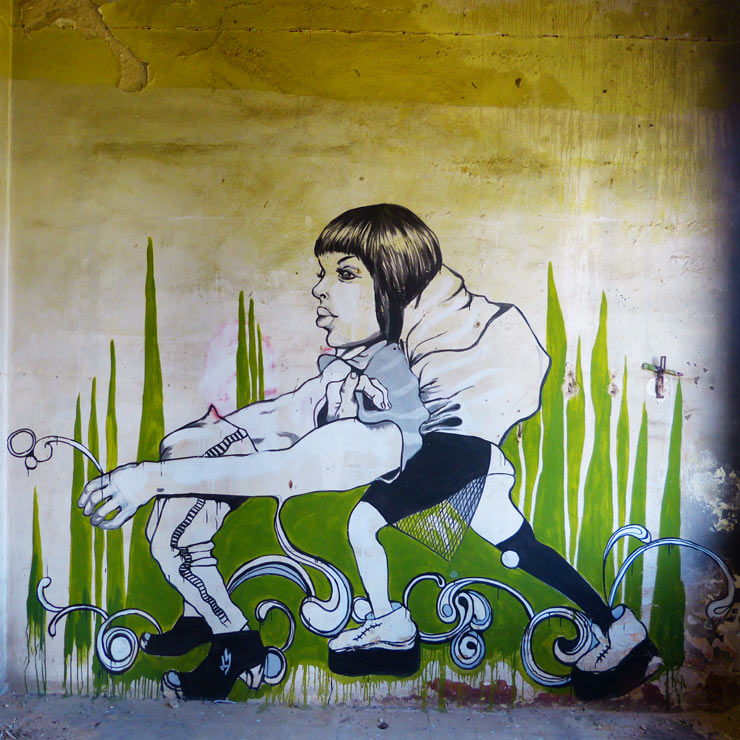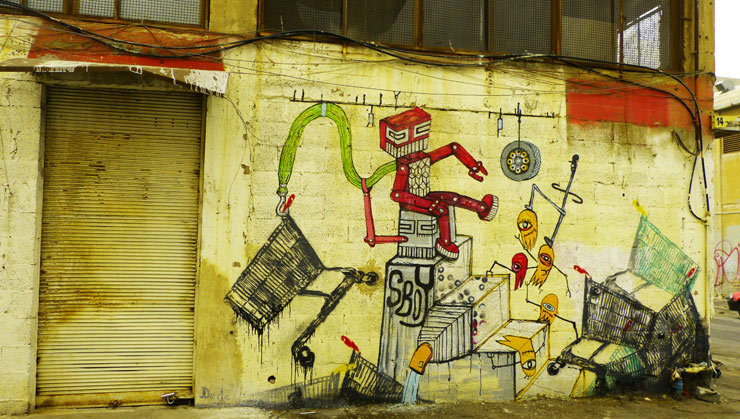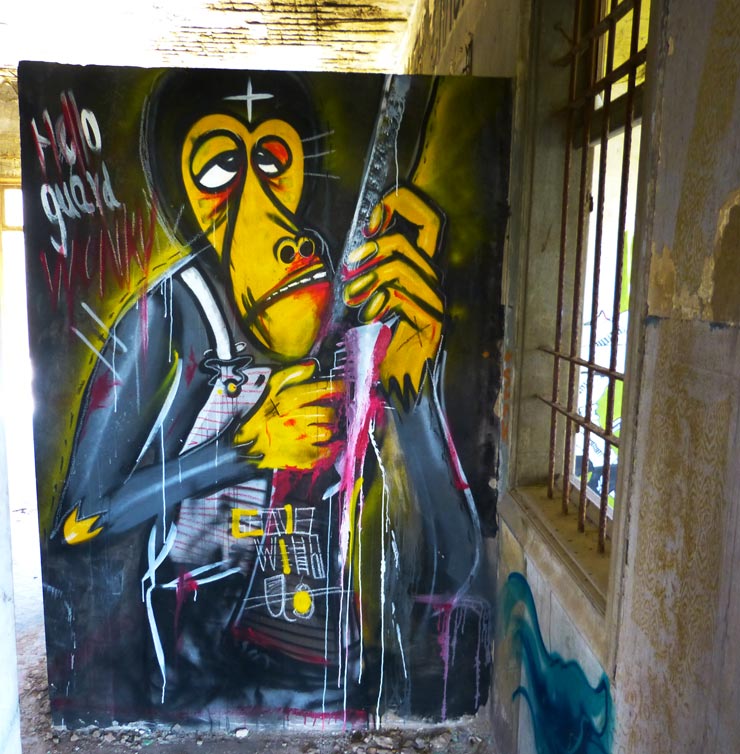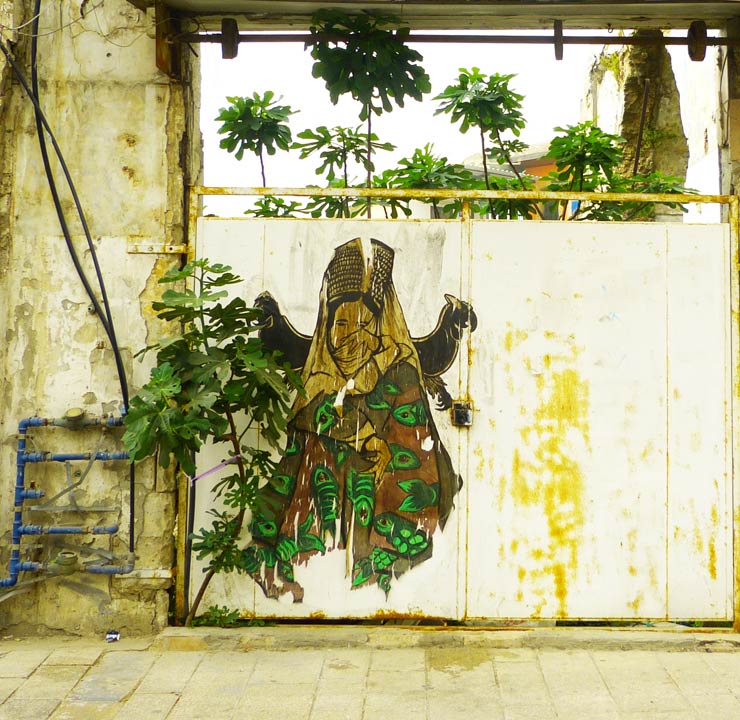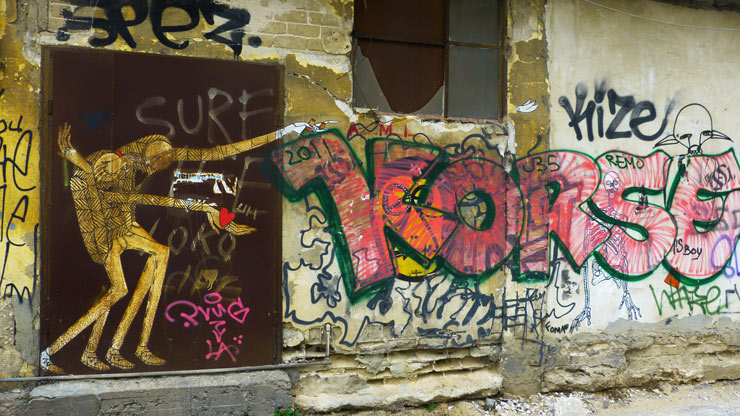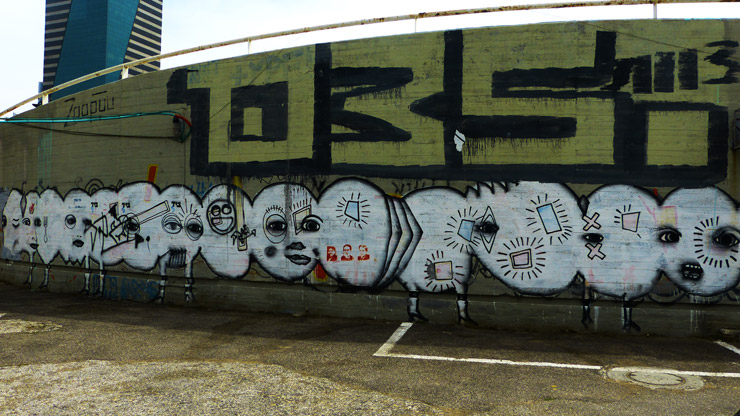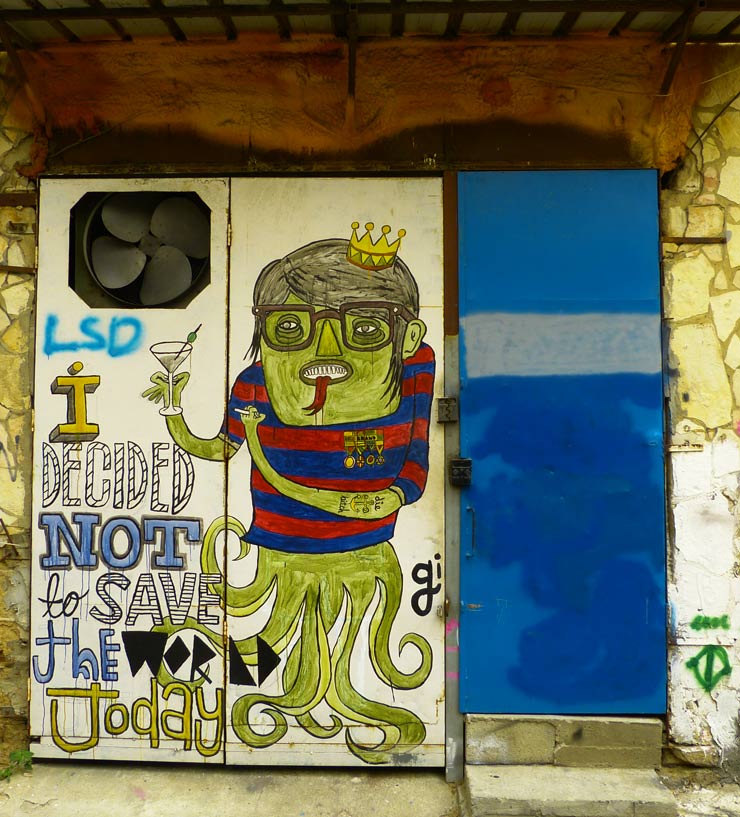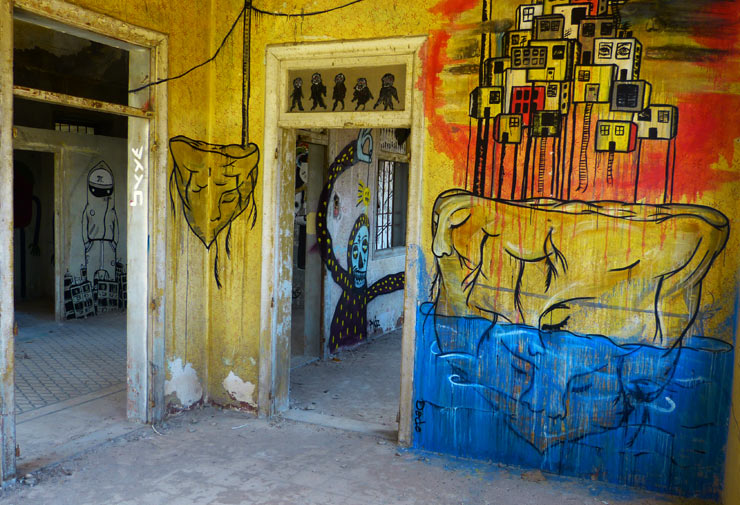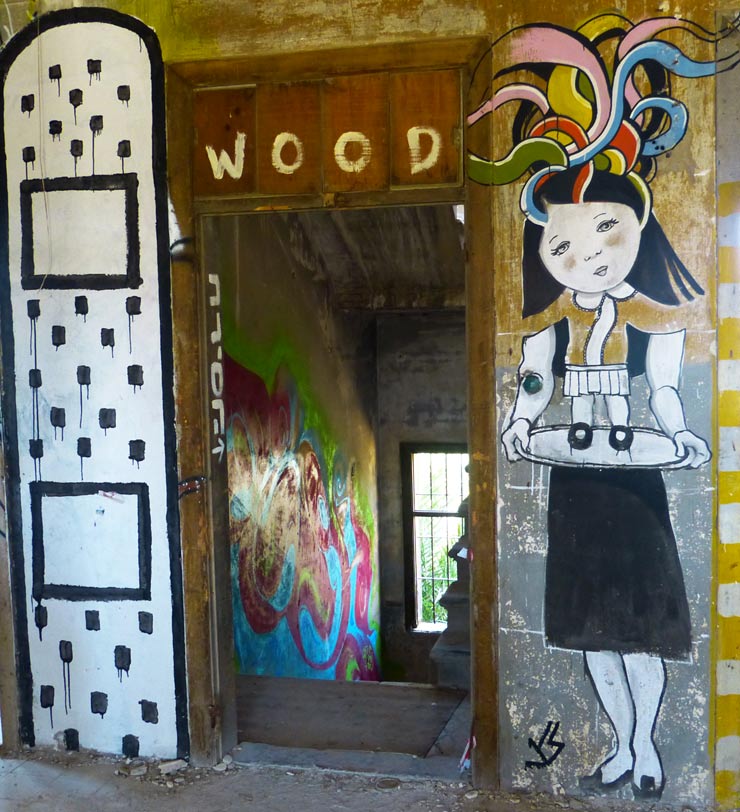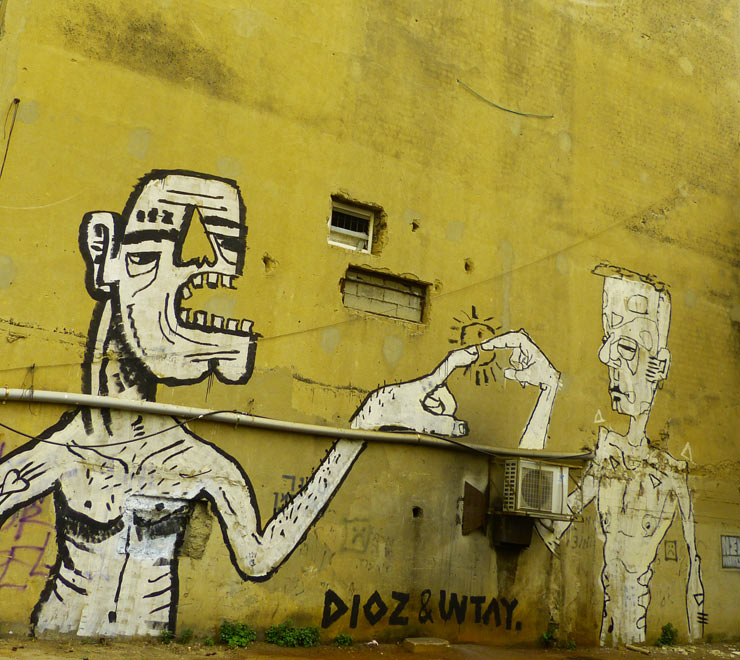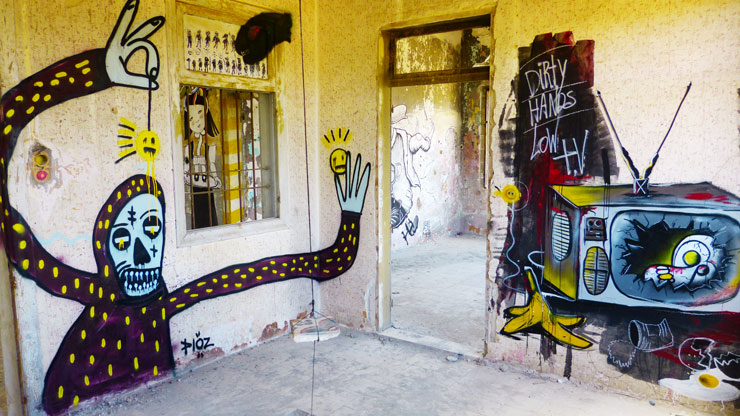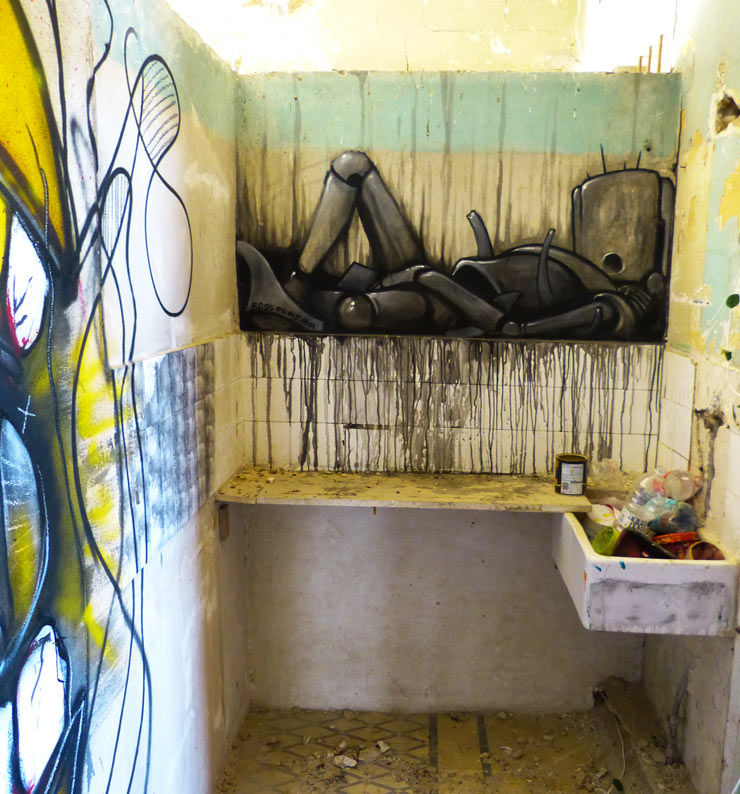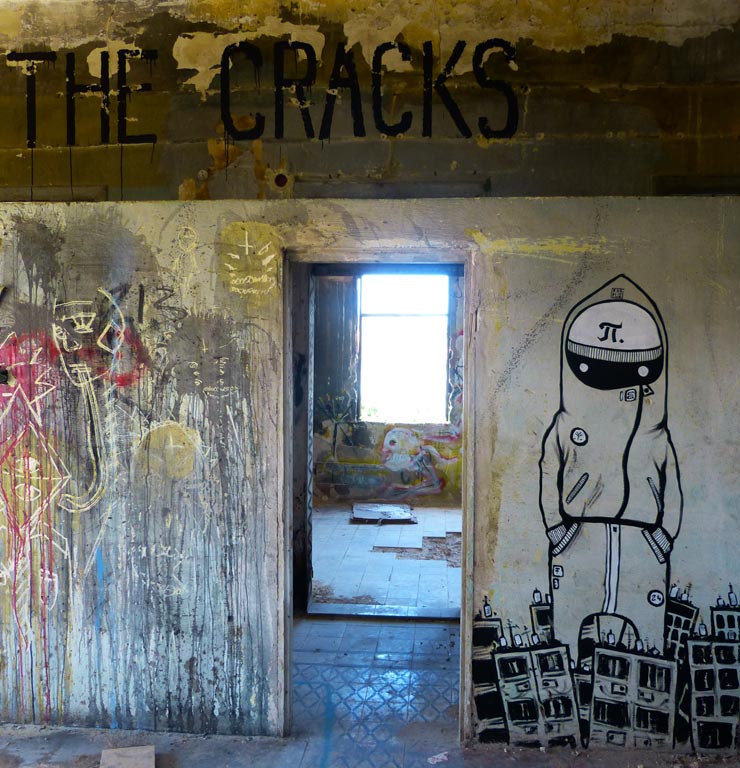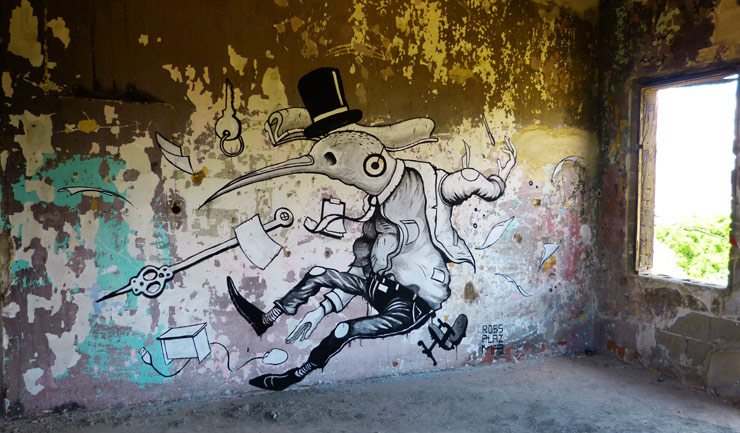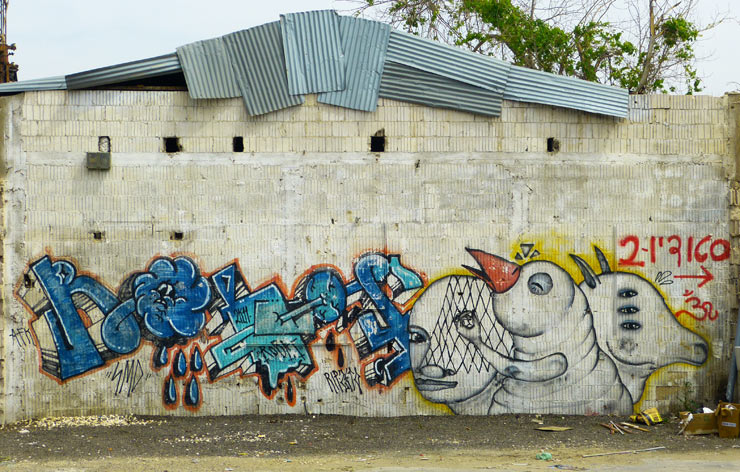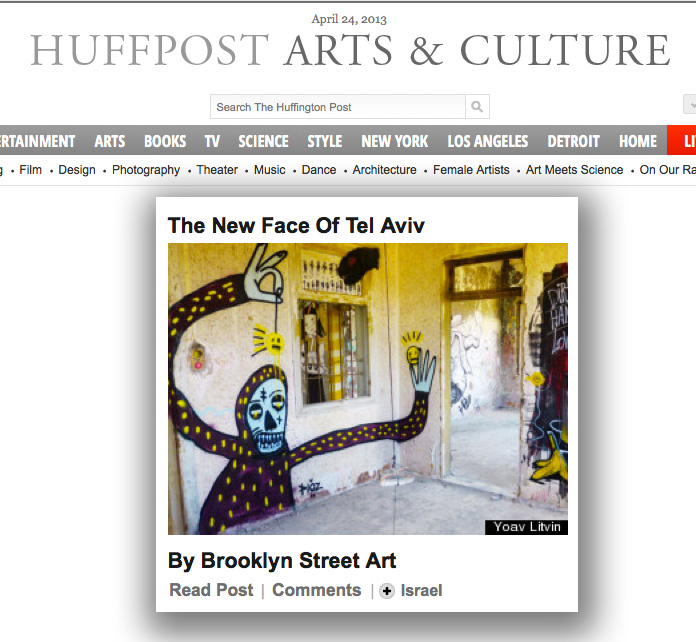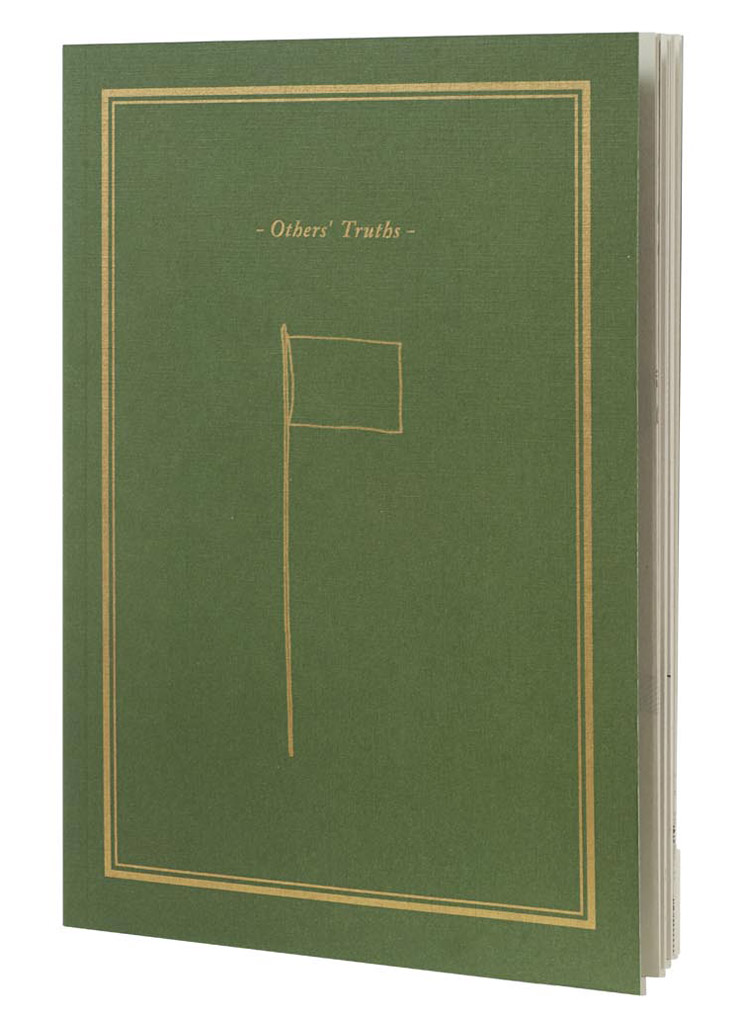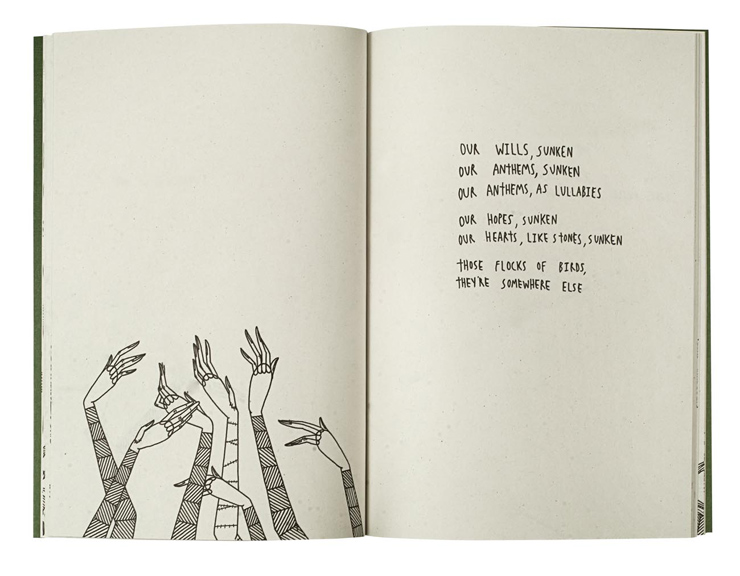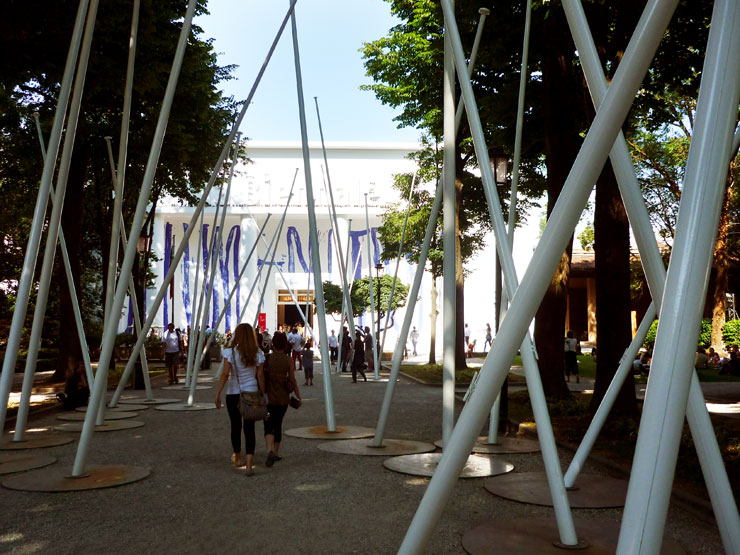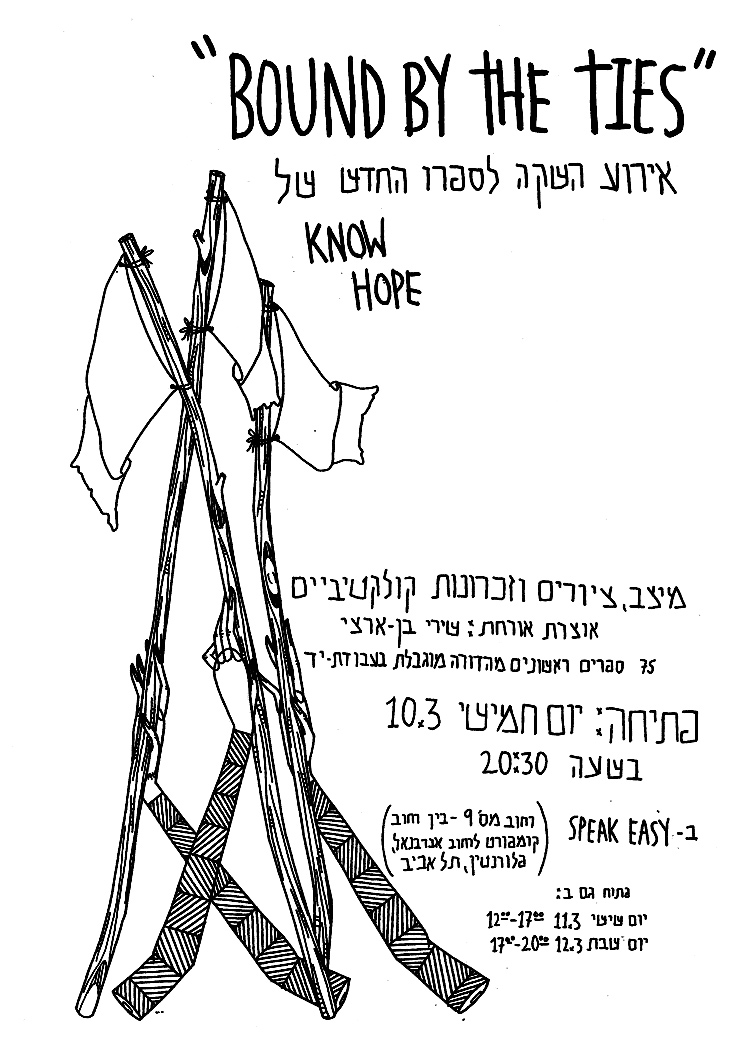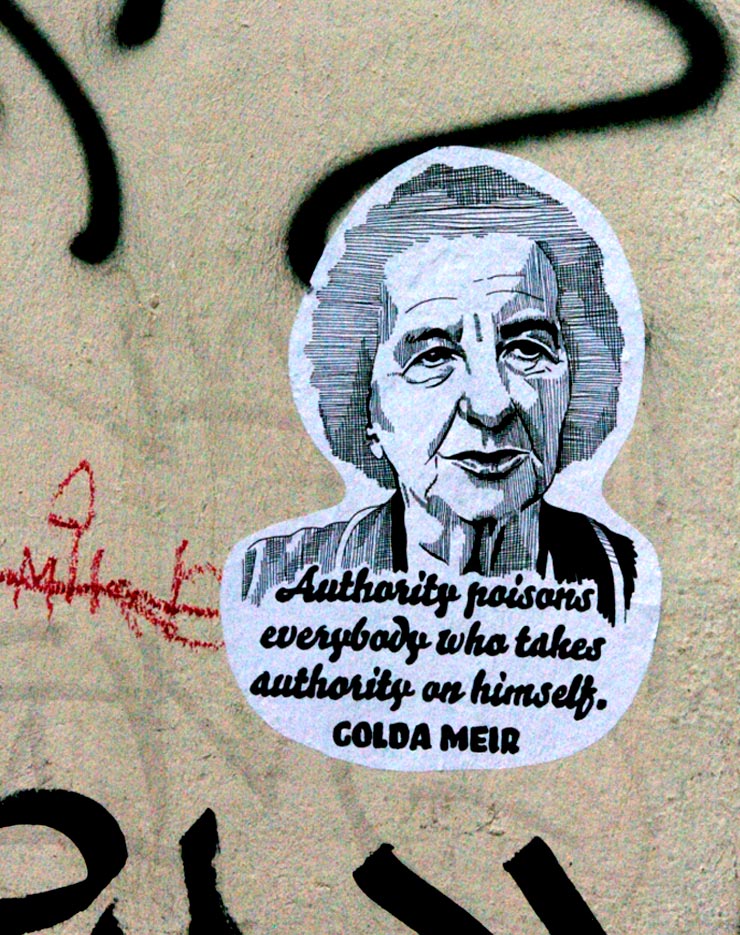Today on BSA we have a special guest contributor, Yoav Litvin, who is an avid photographer of Street Art and someone who has a true interest in the artists, their stories, and how they create their work for the street. Today Yoav brings us to Tel Aviv, Israel to meet a local artist on the scene there whose style continues to evolve across walls of the city. In the interview Dede tells us about the vibe of Tel Aviv, his journey as an artist, his process, how he sees his work critically in the public sphere and how Street Art can intersect with the political and personal.
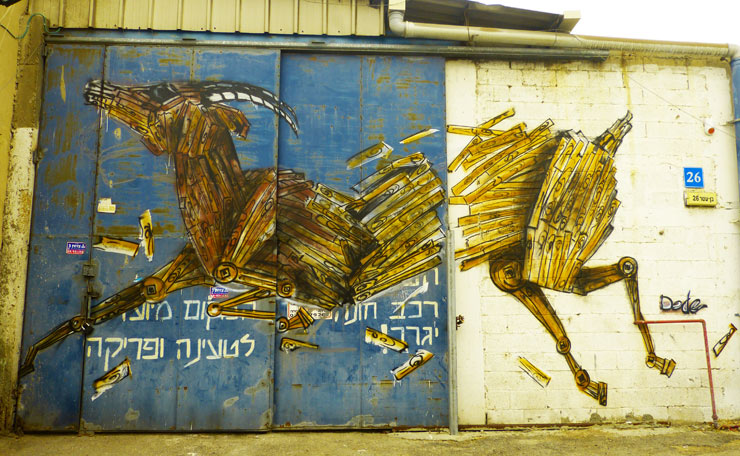
Dede (photo © Yoav Litvin)
Interview with Dede
Conducted, translated and edited by Yoav Litvin
Yoav Litvin: What is the significance of art in the streets?
Dede: For me, street art began as simply a form that was just there. Over time, it gained more and more significance and has become the central and primary form in which I work. Street art is challenging, surprising, dynamic, honest, exposed and always interesting.
Within the urban space I get the most inspiration and drive to create and produce a dialogue with the surroundings and the passersby. On the walls of Tel Aviv, I can initiate democratic and free debates and express my opinions without the meddling or intervention of a curator or gallery. Above all it is a place that enables me to declare my being in the present, and allows me to take part in creating the dynamic urban texture.
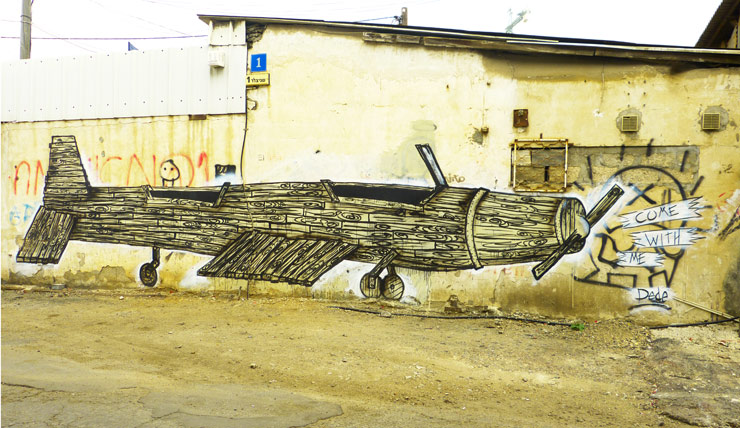
Dede (photo © Yoav Litvin)
Yoav Litvin: How are the current forms of street art a sign of our time?
Dede: In the reality in which we live, street art has new life. In the past, pedestrians would walk the streets and be exposed, via the urban bustle, to information and art. Today people spend more time sitting in front of the computer than walking the streets. With the current culture of sharing and social networks, we can feel as though we are wandering the streets without really leaving home; one can be exposed to street art that is currently produced on the other side of the planet!
This opens up new possibilities, spaces, concepts and statements, making the street art medium even more relevant than before. The statements that emerge from the street reflect the status of the population, its pain, suffering, happiness, etcetera. This enables a dialogue with and between the public in the city and the world; artwork that tackles an issue or problem existing in a certain place can raise awareness around the world.
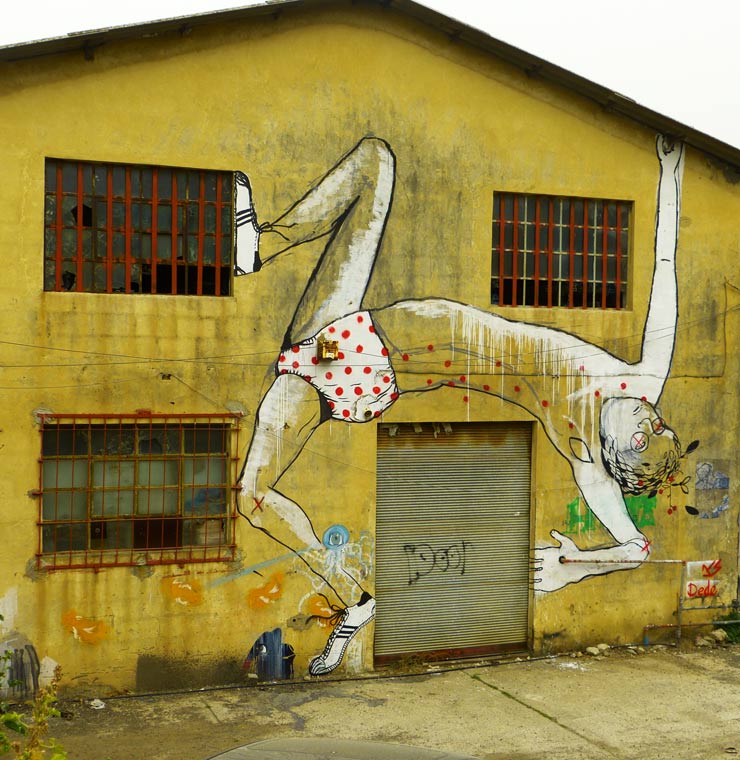
Dede (photo © Yoav Litvin)
Yoav Litvin: How did you become a street artist?
Dede: I have never been able to call myself a street artist. Though my inspiration and energy definitely come from the streets and returns to them, I believe that regarding the artist, the viewer has to decide for him or herself. Art is a concept that is difficult to grasp, almost abstract. It can be described or reviewed in all sorts of ways and everyone has different opinions about it. I create from a place of internal motivation and that makes it hard to explain; I produce regardless of what “art” is.
Yoav Litvin: Do you do studio work as well? What is the difference for you?
Dede: I also work in my studio, mostly preparing for work in the street. In the studio I work on sketches, models and tests that I later develop. Sometimes I accumulate work for a series of works to present in a slightly different manner than I would in the street with a different target audience in mind.
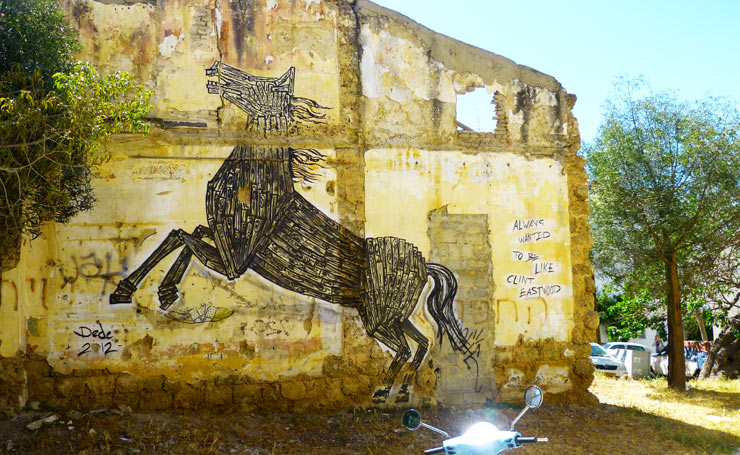
Dede (photo © Yoav Litvin)
Yoav Litvin: What is important for you to highlight in your work as a street artist?
Dede: I guess what’s important for me to highlight in my street art is that there is always an alternative; if there is a pressing issue, whether personal or social, you are allowed to stand up and say what you think about it and in so doing bring the issue to the awareness of the public. Laws should not be complacently accepted, but rigorously reexamined. It is important to be thoughtful, critical and form an educated opinion about them.
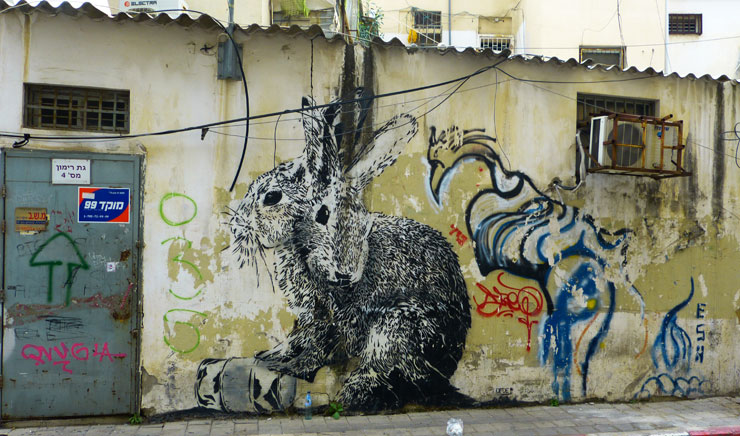
Dede (photo © Yoav Litvin)
Yoav Litvin: What does street art in Tel Aviv reflect about the city’s urban life and about its urban civil society? Which is your favorite neighborhood?
Dede: Something about Tel Aviv made me instantaneously feel connected; I love this city and never get tired of it. It offers infinite walls and workspaces, a fast-paced vibe and a lively young crowd that is very admiring, appreciative and supportive. It is a city that does not represent the rest of Israel, but it has become a place characterized by diverse opinions that interact with and affect the rest of the country. Each neighborhood has its own uniqueness; together the neighborhoods produce a varied and interesting city at any time of day, culturally and in many other respects.
Yoav Litvin: Recount a memorable experience that has happened to you while working on a piece in the street.
Dede: Almost every time I go to work in the street I come back with exciting experiences and stories. One day during a quiet morning when I painted in an open parking lot in the Florentine neighborhood, I was on a ladder and a mom and her little boy approached me from behind. The boy asked his mother what I was doing and his mom responded: “What he’s doing is illegal, but this is his way of expressing himself.” This was a very simple statement and made me realize something unique about my way of life.
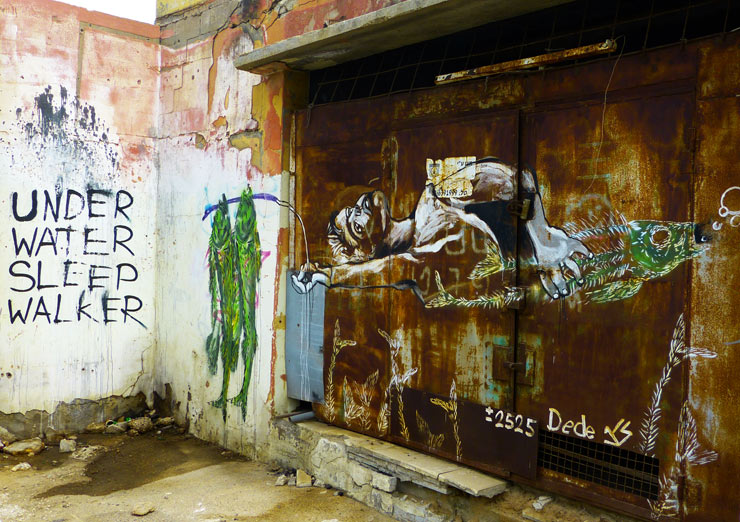
Dede (photo © Yoav Litvin)
Yoav Litvin: How do you envision the future of street art in general and in Tel Aviv in particular?
Dede: In my opinion it is not possible to predict the future. This art movement plays with and between so many boundaries and stays fresh and always interesting, though, and perhaps because there are many attempts to institutionalize and formalize it or to simply exclude it. Along with its exposure and rapid development, street art is introduced into different parts of the “mainstream”. Some are even commercial even though street art is often illegal and directed against the system. It seems to me that it will take time for the interest in the street art scene to wane.
In my opinion this is just the beginning; street art arrived here in Tel Aviv relatively late, caught on very quickly and is still in its infancy. There are a lot of directions in which it could develop and many artists seek to develop their own styles. Like in any other field we Israelis look at what is happening in the rest of the world and try to bring the unique Israeli context into the mix.
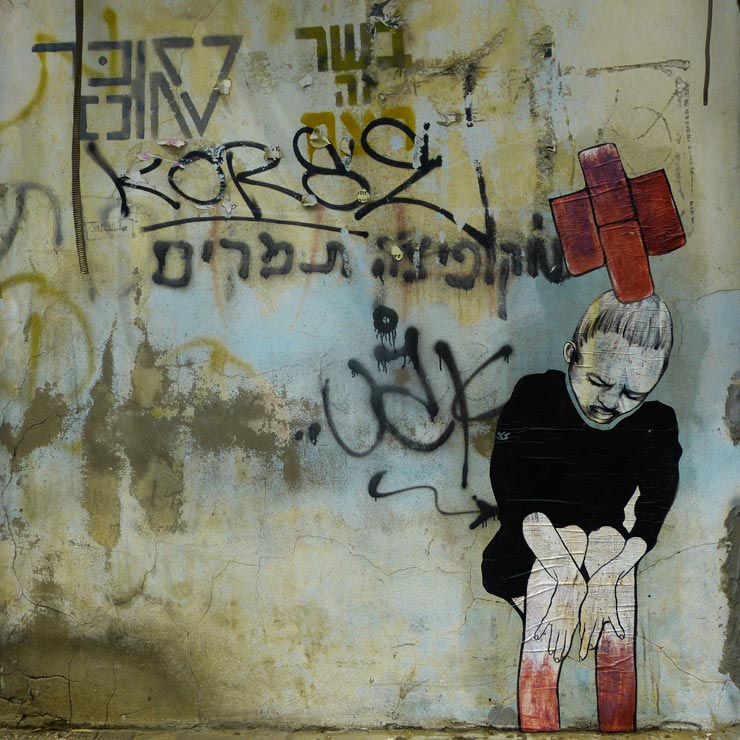
Dede (photo © Yoav Litvin)
Yoav Litvin: Please describe the artistic techniques and materials you favor and why.
Dede: Being a curious person and not very rational, I utilize a variety of techniques. I start thinking of what I want to say or do and where I want to say it and then only how to make it. I work with stencils, pastes, free hand, installations, site-specifics and more. I use paint, spray paint, paper and various industrial materials.
I hope that what eventually echoes out of my work is a path that shows my way of thinking and reasoning with statements that are probably still not completely clear, but will be revealed gradually to both myself and viewer.
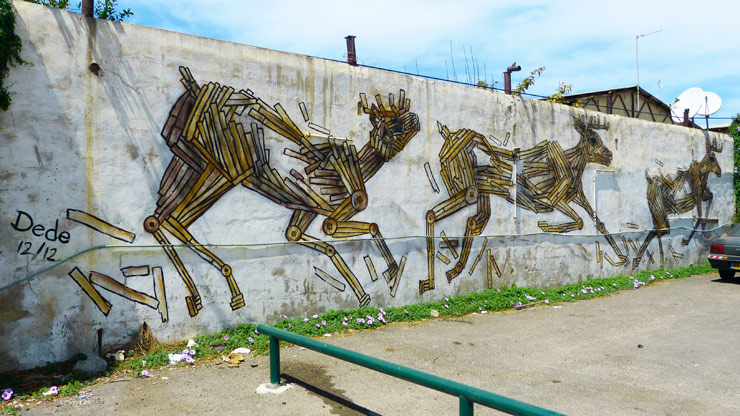
Dede (photo © Yoav Litvin)

Dede (photo © Yoav Litvin)
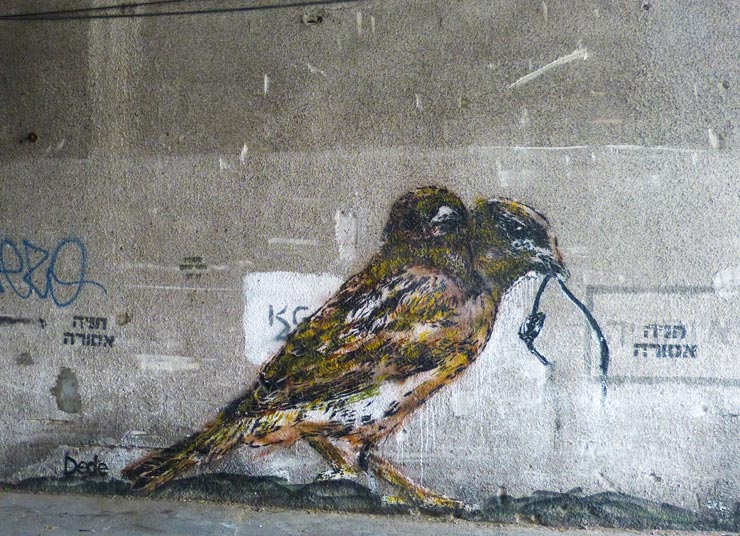
Dede (photo © Yoav Litvin)
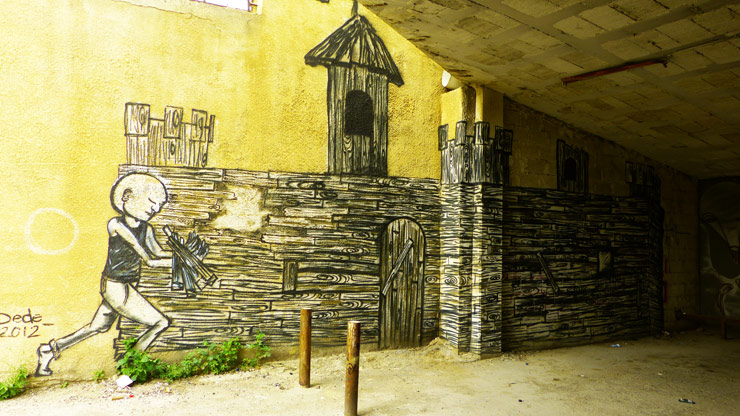
Dede (photo © Yoav Litvin)
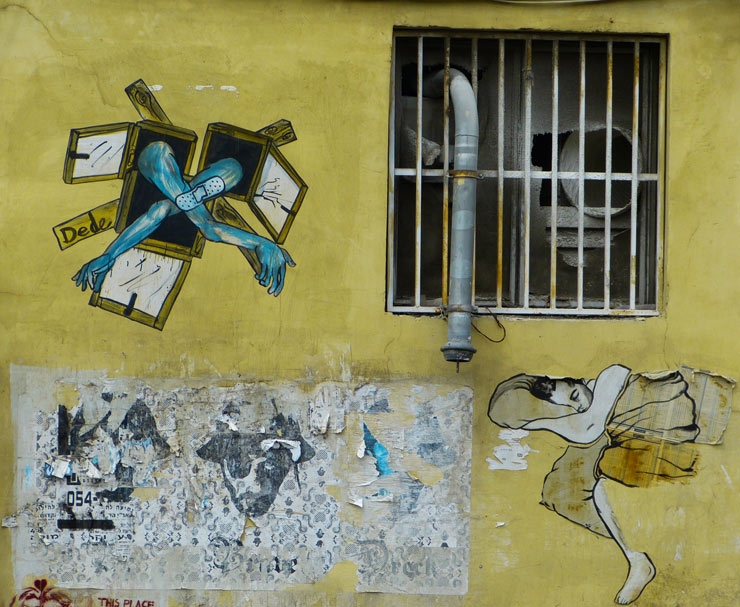
Dede (photo © Yoav Litvin)
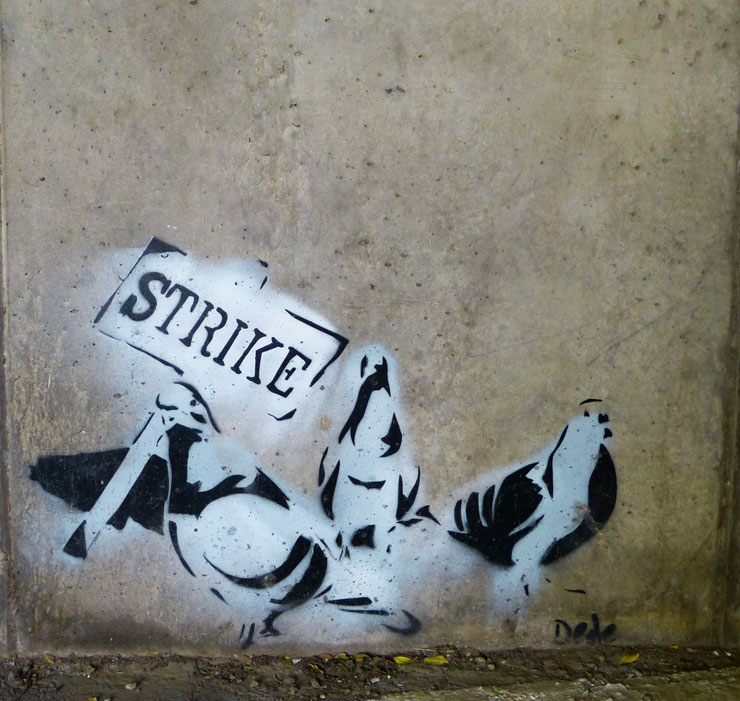
Dede (photo © Yoav Litvin)
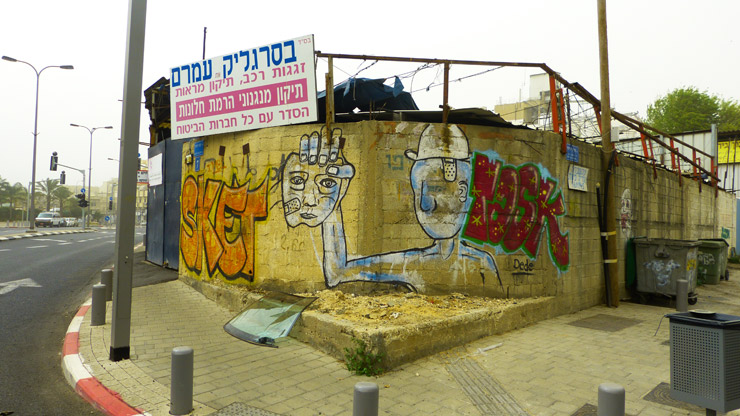
Dede. Sket . Task (photo © Yoav Litvin)
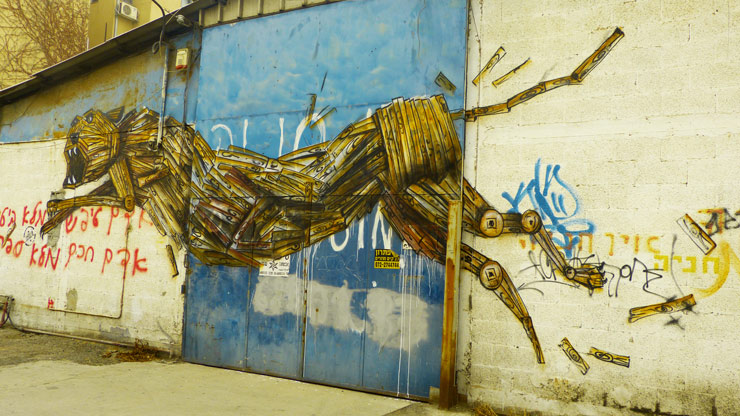
Dede (photo © Yoav Litvin)
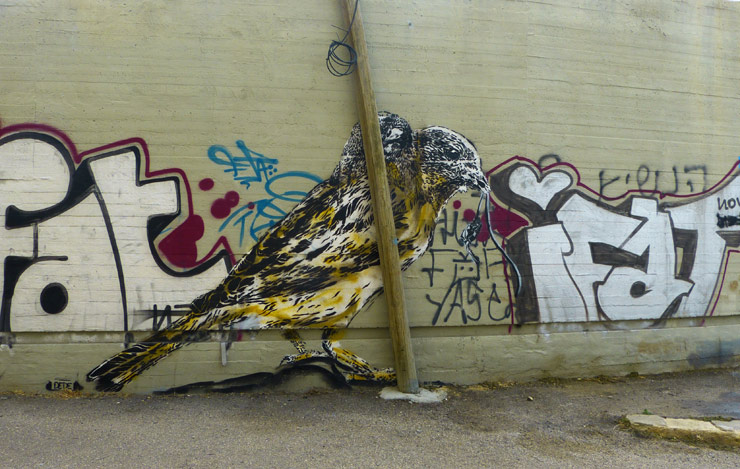
Dede (photo © Yoav Litvin)
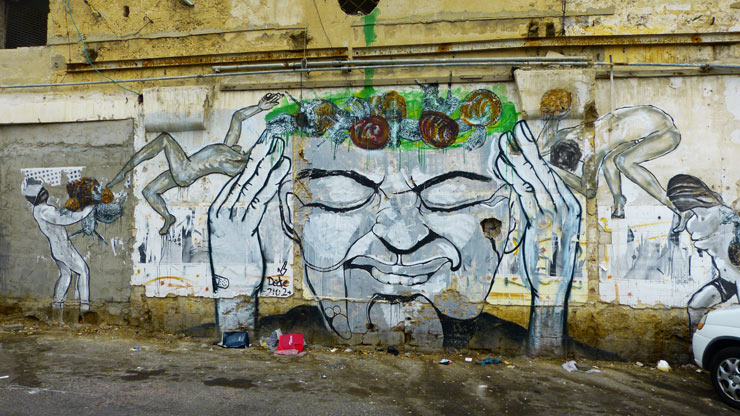
Dede (photo © Yoav Litvin)
Dede’s Info
Website: http://imdede.com/
Facebook: http://www.facebook.com/im.dede
Flickr: http://www.flickr.com/photos/dedeconfidential/
<<>>><><<>BSA<<>>><<<>><><BSA<<>>><><<>BSA<<>>><<<>><><BSA
Please note: All content including images and text are © BrooklynStreetArt.com, unless otherwise noted. We like sharing BSA content for non-commercial purposes as long as you credit the photographer(s) and BSA, include a link to the original article URL and do not remove the photographer’s name from the .jpg file. Otherwise, please refrain from re-posting. Thanks!
<<>>><><<>BSA<<>>><<<>><><BSA<<>>><><<>BSA<<>>><<<>><><BSA
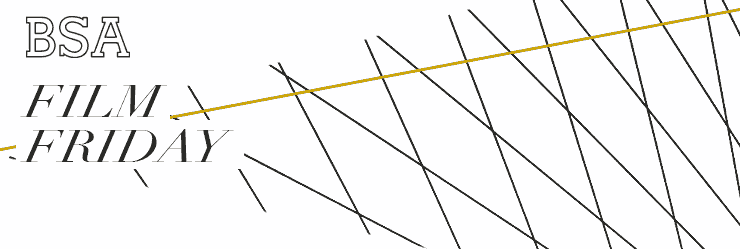

 BROOKLYN STREET ART LOVES YOU MORE EVERY DAY
BROOKLYN STREET ART LOVES YOU MORE EVERY DAY